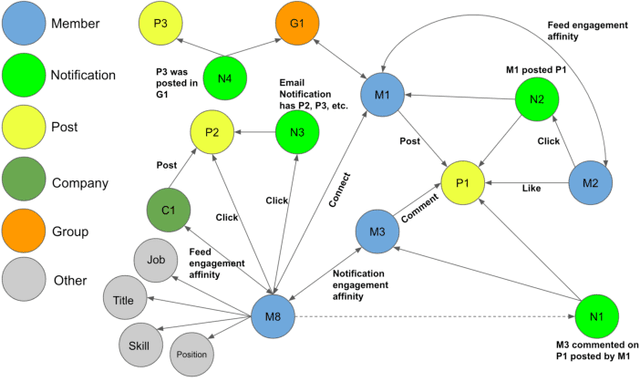Kuang-Hsuan Lee
LiNR: Model Based Neural Retrieval on GPUs at LinkedIn
Jul 18, 2024



Abstract:This paper introduces LiNR, LinkedIn's large-scale, GPU-based retrieval system. LiNR supports a billion-sized index on GPU models. We discuss our experiences and challenges in creating scalable, differentiable search indexes using TensorFlow and PyTorch at production scale. In LiNR, both items and model weights are integrated into the model binary. Viewing index construction as a form of model training, we describe scaling our system for large indexes, incorporating full scans and efficient filtering. A key focus is on enabling attribute-based pre-filtering for exhaustive GPU searches, addressing the common challenge of post-filtering in KNN searches that often reduces system quality. We further provide multi-embedding retrieval algorithms and strategies for tackling cold start issues in retrieval. Our advancements in supporting larger indexes through quantization are also discussed. We believe LiNR represents one of the industry's first Live-updated model-based retrieval indexes. Applied to out-of-network post recommendations on LinkedIn Feed, LiNR has contributed to a 3% relative increase in professional daily active users. We envisage LiNR as a step towards integrating retrieval and ranking into a single GPU model, simplifying complex infrastructures and enabling end-to-end optimization of the entire differentiable infrastructure through gradient descent.
LiGNN: Graph Neural Networks at LinkedIn
Feb 17, 2024



Abstract:In this paper, we present LiGNN, a deployed large-scale Graph Neural Networks (GNNs) Framework. We share our insight on developing and deployment of GNNs at large scale at LinkedIn. We present a set of algorithmic improvements to the quality of GNN representation learning including temporal graph architectures with long term losses, effective cold start solutions via graph densification, ID embeddings and multi-hop neighbor sampling. We explain how we built and sped up by 7x our large-scale training on LinkedIn graphs with adaptive sampling of neighbors, grouping and slicing of training data batches, specialized shared-memory queue and local gradient optimization. We summarize our deployment lessons and learnings gathered from A/B test experiments. The techniques presented in this work have contributed to an approximate relative improvements of 1% of Job application hearing back rate, 2% Ads CTR lift, 0.5% of Feed engaged daily active users, 0.2% session lift and 0.1% weekly active user lift from people recommendation. We believe that this work can provide practical solutions and insights for engineers who are interested in applying Graph neural networks at large scale.
 Add to Chrome
Add to Chrome Add to Firefox
Add to Firefox Add to Edge
Add to Edge